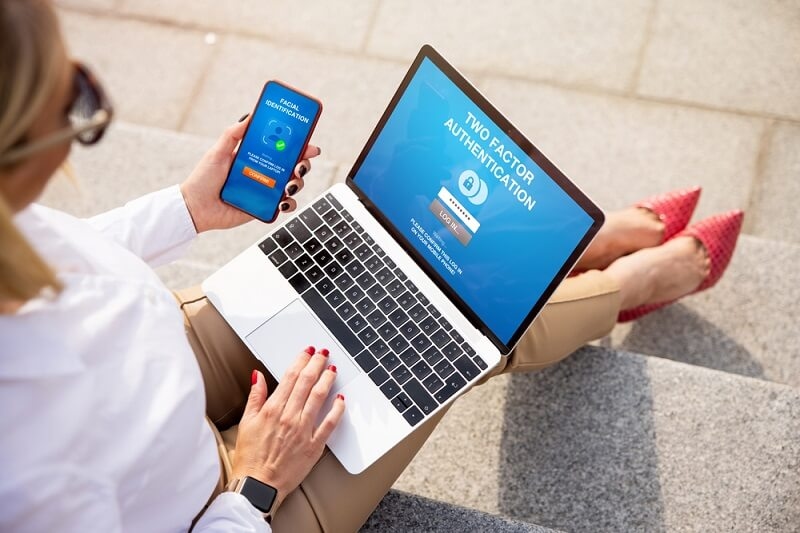
Living in the era of digitalization, it is not enough to use only passwords to secure your accounts. Cyber threats are advancing to new levels, making two-factor authentication (2FA) one of the most effective and straightforward ways to enhance your security. New to tech or never managed to turn on 2FA? This guide will take you through all you need to know to do that, including which 2FA method to use, how to use 2FA on your phone, email, and much more.
Two-factor authentication, otherwise written as 2FA, is an optional form of protection that is used to ensure the identity of individuals attempting to log in to an online account. It is necessary first to enter your password. You will then be required to type in another incoming information, such as a code that is sent to your phone, when you skip the barcode reading part.
The passwords are guessable, leakable, or theftable. However, when a user has 2FA, even when their passwords are stolen, they are still not able to log in to your account. The second factor may be a text message code, an app-generated code, or even it can be your fingerprint.
Some types of 2FA exist. The most common ones are going to be broken down in order to understand the options.
SMS-based 2FA sends a code to your mobile phone via text message. It’s simple and widely used, but also has some security risks. Hackers can intercept SMS messages through SIM swapping or phone number hijacking.
On the other hand, authenticator apps like Google Authenticator or Authy generate time-based codes on your device, without needing internet or a mobile signal. These apps are much safer because the codes are stored locally and can't be intercepted.
Bottom line: If possible, go with an authenticator app instead of SMS. It’s safer and just as easy once you get the hang of it.
Choosing the right app can make your experience smoother. Here’s a 2FA apps comparison of the most popular choices:
If you’re just starting, Authy is great for beginners because of its backup and multi-device options.
Enabling 2FA on your devices and online accounts is easier than you think. Here’s how to do it step-by-step.
Your email is often the key to all your other accounts. If someone gets into your email, they can reset your passwords elsewhere. That’s why 2FA for email accounts is a must.
Gmail (Google Account):
Outlook/Hotmail:
Yahoo Mail:
Make sure you also enable 2FA on work or school emails if available.
Your social profiles can be a goldmine for hackers. Protect them with 2FA:
Facebook:
Instagram:
Twitter (X):

Phones and computers now support built-in 2FA features.
iPhone:
Android:
Windows Laptop:
When it comes to the U.S.'s favorite 2FA methods, surveys show that Americans prefer:
While SMS is still common, tech experts recommend switching to app-based 2FA for better security.
Let’s talk about backup codes' best practices. These codes help you get back into your account if you lose your phone or access to your 2FA method.
Backup codes are one-time-use login codes generated by services like Google, Facebook, and others. You get them during 2FA setup.
Whenever you’re prompted to download backup codes, take the time to store them properly.
Losing access to your phone or authenticator app can be scary. Here’s what to do:
Most accounts offer backup codes that let you log in without your phone.
If you have multiple devices connected (like Authy on phone and tablet), use the other one.
Go to the account recovery page of the service (Google, Facebook, etc.) and follow the steps. This often includes verifying your identity.
Tip: Set up multiple recovery options, like backup phone numbers or emails, to make account recovery easier.
Even with good intentions, beginners sometimes make mistakes. Avoid these:
While it’s better than nothing, SMS is less secure. Prefer apps like Authy or Google Authenticator.
Always save them during setup. Skipping this step can lock you out later.
Try to diversify. If your phone is stolen, having 2FA only on that device can be risky.
Since email is often used to reset other passwords, it’s the first account that needs protection.
Two-factor authentication may seem like an enormous project, but it will take only a couple of minutes, and you will have an excellent defense against cyber problems. Begin with the most valuable accounts, like your email or bank, and proceed to social media and other apps. Comparing 2FA apps? Pitting SMS against authenticators in terms of safety? Acquainting yourself with the best practice of creating backup codes? The guide will take you through all the points you need to start. This is because in the current world, a bit more security is worth a lot. Act now before it is too late by activating 2FA on all your devices.
This content was created by AI